New Signs of Life in an Old Han
Over the past two years, artists have been finding a place to produce and create community in the century-old Tokatlıyan Han. Now they're inviting the public in to rediscover the building too.
The first thing you hear when you step onto the fifth floor of the Tokatlıyan Han, a century-old building on İstiklal Caddesi, is what sounds like a gentle symphony of glass breaking in a nearby room. The persistent tinkle is instead coming from two pieces of kinetic art by A. Serkan Aka: a small table on which tiny metal spoons clink in empty tea glasses, and an assortment of makeshift plumb bobs – an old metal key, a bent spike, a bottle top – dancing over a carpet of ceramic shards. In a third piece by the same artist, two worn wooden chairs tilt almost imperceptibly back and forth, as if adjusting for the shifting weight of an unseen sitter.
If you believe in ghosts, there are probably plenty of them in the Tokatlıyan Han, which was constructed in 1897 by the French-Ottoman architect Alexandre Vallaury on the site of a theater house that had burned to the ground just a few years earlier. Under the ownership of Armenian businessman Mıgırdiç Tokatlıyan, the Tokatlıyan Hotel was among the city’s most luxurious, but the effects of the punishing “Wealth Tax” levied against non-Muslim minorities in 1942 caused it to change hands and eventually be converted into offices and commercial spaces. By the end of the 2000s, the building was a husk of its former self, with a dwindling number of tenants and in dire need of refurbishment.
But the fifth-floor exhibition, A Polyphonic Garden, is a sign of blossoming new life for the old han. Over the past couple of years, artists – painters, ceramicists, photographers, musicians, and writers – have started moving in, seeking more affordable studio space amid an ongoing housing and economic crisis.
More than 50 artists have now taken up residence in Tokatlıyan Han, according to exhibition curator Eda Yiğit, who was among the first in the new crop of creative tenants. After doing her PhD thesis on the Bomonti Beer Factory, Yiğit has turned her attention to researching the Tokatlıyan Han – not just the building’s history but its human heritage, right up to the present day.
“There is a community here, these small shopkeepers and craftspeople, that are the keepers of its daily history, its atmosphere,” she says. Yiğit has highlighted some of her new neighbors’ stories as oral histories in one room of the A Polyphonic Garden exhibition, which occupies the top-floor offices used by lawyers until the nearby Beyoğlu courthouse was relocated out of the area in 2011.

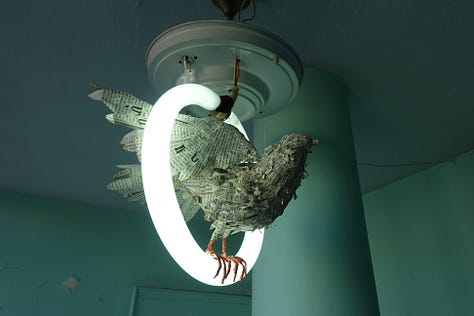
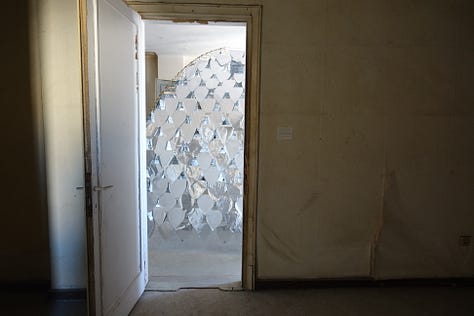
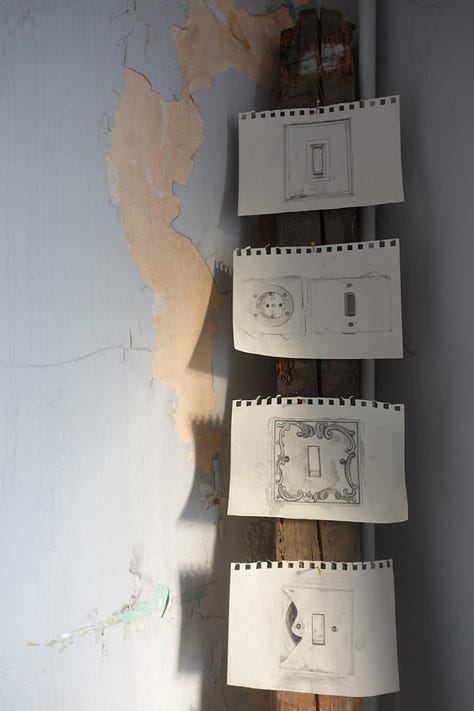
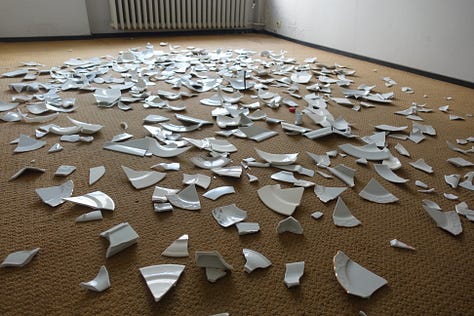
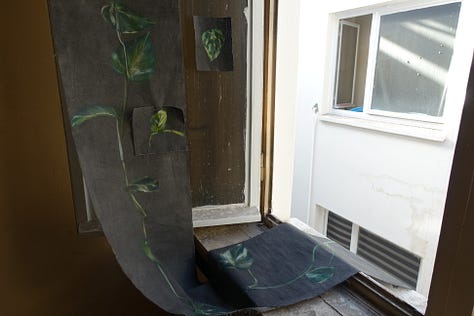
Many of the participating artists took inspiration – and materials – from the since-abandoned space. Orçun Beslen gathered paint chips from different rooms and assembled them together into a multicolored carpet floating above the floor. Şafak Kocaoğlu’s dust-covered found objects evoke an archaeological dig while Bilal İmren’s camera lovingly paints the building’s worn surfaces with sunlight. İlhan Sayın’s bird, sculpted out of old newspapers left behind in the empty rooms, perches in a neon light ring and Özge Akdeniz’s painted vines tumble out a window as if reaching towards the garden the artists have created at the bottom of the airshaft.
“The exhibit is bringing people back to the han again for the first time in a long time, they’re getting to know the building and its community,” Yiğit says. “It’s an opportunity to dream differently, to really feel this place again.”
The group exhibition A Polyphonic Garden, curated by Eda Yiğit and featuring artists A. Serkan Aka, Özge Akdeniz, Orçun Beslen, Kirkor Dabanyan, Ari Hergel, Bilal İmren, Mine Kemertaş, Şafak Kocaoğlu, LÜTFÜ, İlhan Sayın, and Funda Susamoğlu, is on view on the terrace floor (5th floor) of Tokatlıyan Han, İstiklal Caddesi No.76, until 31 October. Opening hours are noon to 6pm Monday through Saturday.




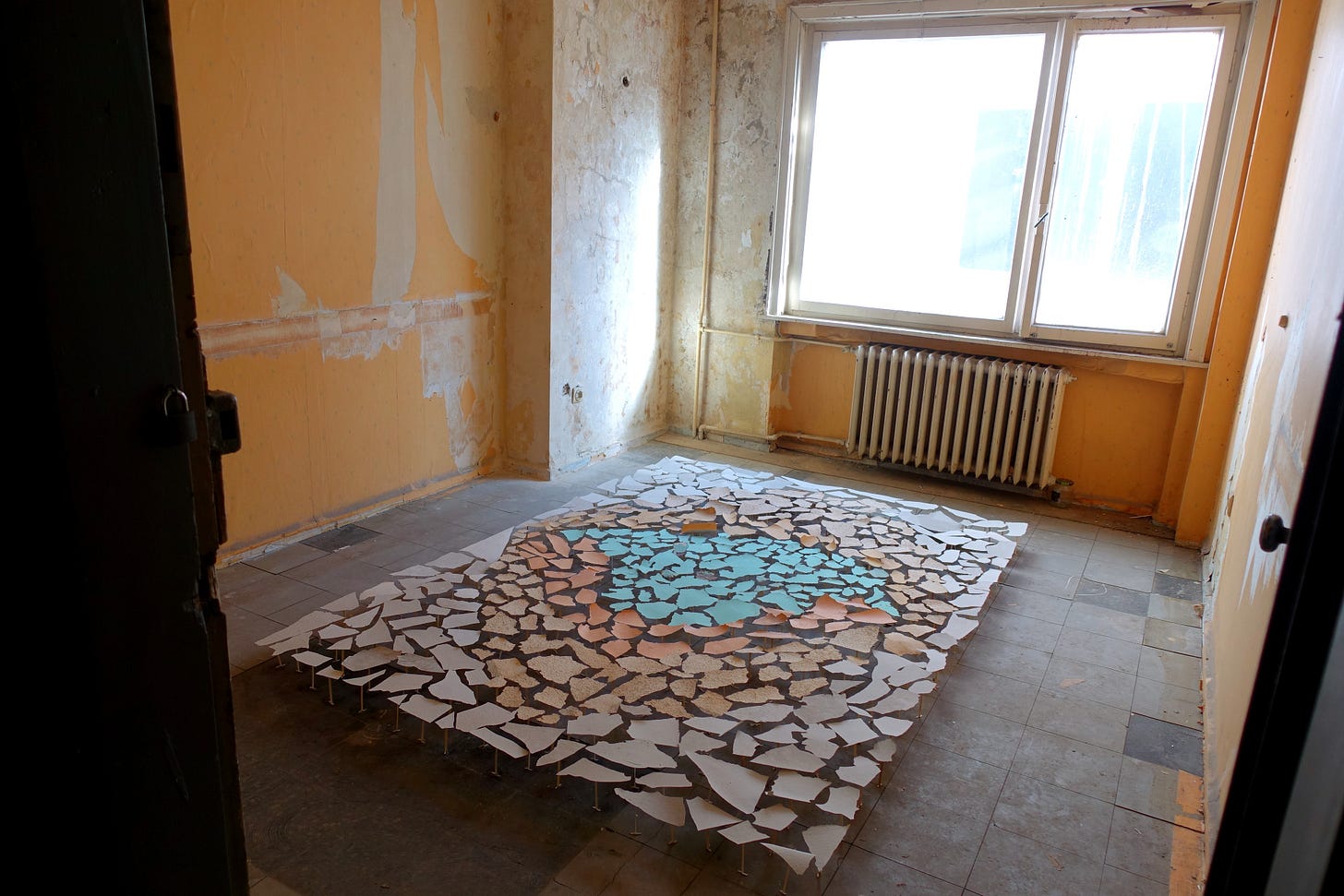
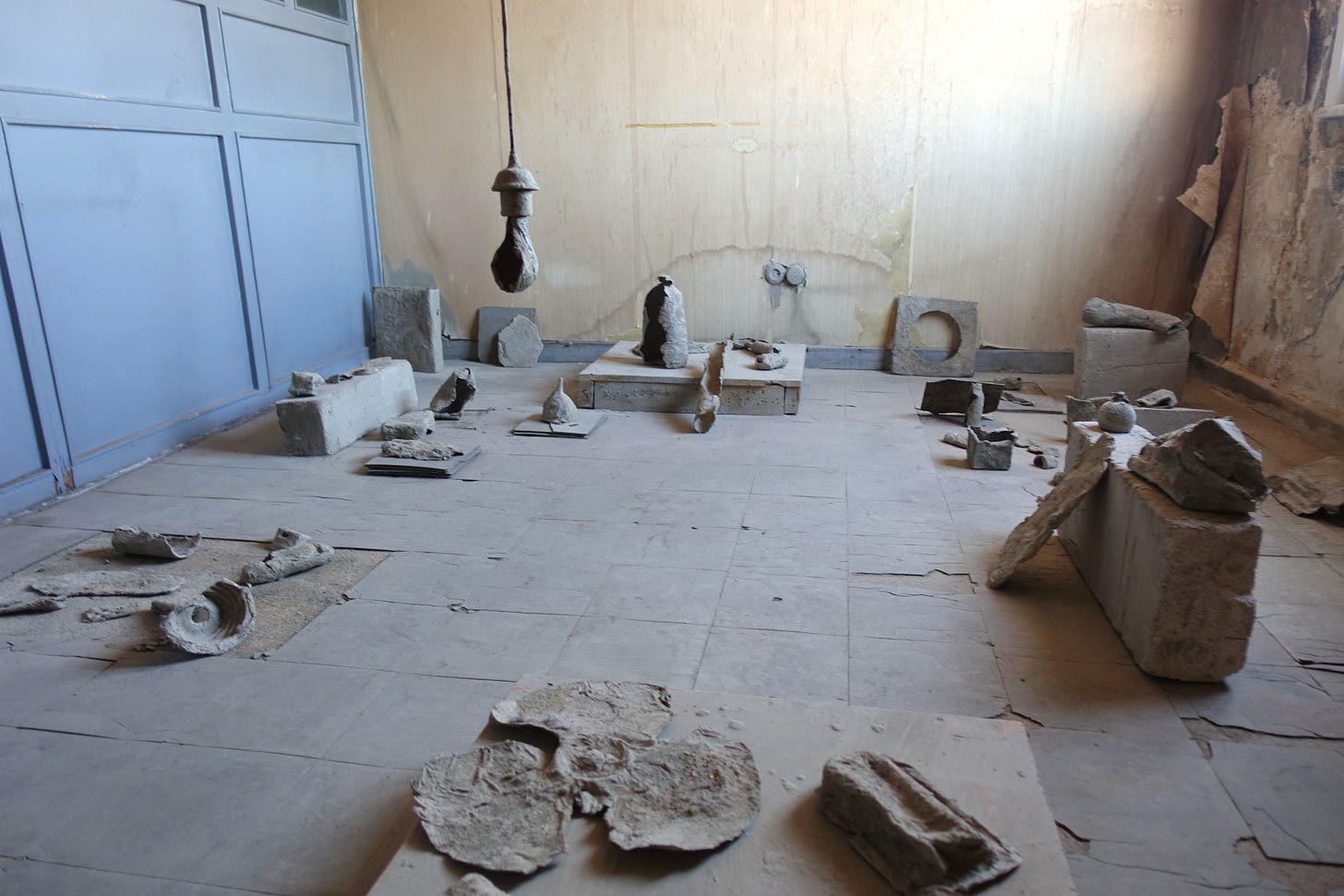
Thanks for this Jennifer - it’s encouraging and the exhibition looks looks very interesting. My cup of tea :))